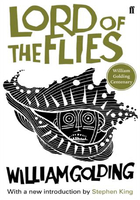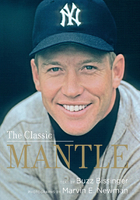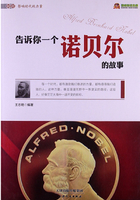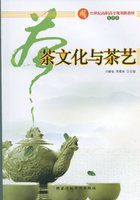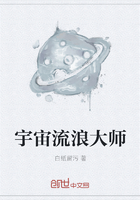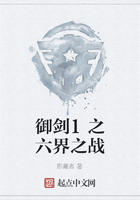Defining your market
THE CREATIVE CHALLENGE:
Determining who your customer is and how you can keep focusing on that customer
Birkenstock USA began as a seller of innovative, comfortable footwear—perhaps too innovative at the time. When founder Margot Fraser began trying to wholesale the funny-looking German-made sandals in the United States, no one wanted to give her the time of day. But she was wearing the sandals and knew how therapeutic and comfortable they were. She was convinced Americans with tired, aching feet who would appreciate them were out there —if only people had the chance to put them on. This notion propelled Margot to her first event (a health food store convention), where people could try the sandals for themselves. Store owners liked how the sandals felt and told their customers about them, and the Birkenstock brand soon began to show up on feet throughout the country.
In this chapter we'll take a look at several kinds of businesses and see how they ended up with their customer base and their sales strategies for reaching those customers. You may start a business with a clear idea of who the target customer is. For example, if you're making biodegradable diapers, you know right off the bat that your customers are people with young children and that you would be wasting huge amounts of money if you advertised your product to people who don't have children. However, if your product has a wider appeal or fits into multiple niche markets (e.g., environmental, skiing, general outdoor), you may have difficulty figuring out the best way to reach the ideal customer to make the most of your efforts and therefore increase sales. And you may find out that as your business grows, your customer base will also expand, which may present new issues or force you to consider taking different approaches to capturing this burgeoning market.
For this chapter we are calling our lessons Defining Strategies. Consider the situations illustrated and see if they can help you more accurately pinpoint your customers as well as design strategies to make the most of your sales efforts.
DEFINING STRATEGY NUMBER ONE:
Target a specific segment of the population, but be open to adjusting your strategy as your business grows.
If you have a good product designed for a specific type of customer, sales can build quickly just by targeting individuals in that group. However, nothing is wrong with expanding your customer base if you see that your product can easily carry over into other segments of the population.
One way to ensure a smooth flow into a new customer base is to plan from the beginning to expand into other demographics. To do this you must have a product or service that lends itself to such expansion, but if you take steps in the early stages to eventually broaden your reach, you'll be ready to take the appropriate measures to design new marketing materials, educate your sales staff, and create new distribution channels if necessary.
Expanding the Empowerment Opportunities
Nadine Thompson knew when she created Warm Spirit with her partner, Daniel Wolf, that she would eventually want to sell her personal care products and offer the business opportunity to individuals outside the initial target group: African American women. As the New Hampshire–based company gains attention around the country and its sales force expands, Nadine will have momentum to broaden both the customer base and the sales force.
In the early stages of Warm Spirit, Nadine deliberately focused on the African American community. Everything the company did in the first six years targeted this particular demographic. Models featured in catalogs and promotional materials were usually black, and some products were formulated for black women's needs, such as the company's hair butter, which is traditionally used by women of color. Nadine first presented the company and its products at African American Women on Tour events.
Although Nadine wanted to present her new products and the Warm Spirit business opportunity specifically to African American women, she was also clear about the type of black women she wanted to reach: those who were middle-class and upwardly mobile. This focus was especially critical in the early stages of building the company since Nadine knew that this type of woman was needed to lead others in creating strong individual sales organizations. The African American Women on Tour events were the perfect venue since many of the women who attended were corporate executives or entrepreneurs already. Several of Warm Spirit's top consultants came from the relationships Nadine built at these events.
Today, Warm Spirit is attracting the attention of customers and entrepreneurs of other ethnicities, and Nadine hopes that this interest will continue to grow. Plans are underway to translate marketing materials into Spanish to better reach the Hispanic market, and Nadine is eager to work with Native Americans to develop new product formulations as well as see if she can create a business opportunity tailored specifically for them. The Caucasian market is also a large part of this expanded vision. Nadine has always made it clear to her consultants that she wanted to include the white market, and she feels the black consultants have been good about sharing the opportunity and products with their white friends and coworkers. Men are also joining the company, albeit in small numbers, which pleases Nadine.
Nadine had a clear vision about providing an opportunity and product for African American women when she and Daniel started the company. But they also knew from the beginning that even though they wanted to start there, that's not where they wanted to end up. With the future in mind, Nadine had both the white and black segments of the population in focus.
DEFINING STRATEGY NUMBER TWO:
Remain true to your original product concept and target customer while broadening your sales efforts.
As many entrepreneurs discover, an idea built around satisfying a personal need can often catapult a company into sizable sales. The trick is to maintain the focus behind the original idea as you expand your business and add products to your line. Once again, think ahead. Your original idea may be unique to the marketplace, but consider how you could eventually expand this concept when the time is right.
You may need to study market trends to see where your customers are headed in the future. You will also learn from your existing customers, suppliers, and distributors if you maintain open lines of communication. Study your own sales trends and learn from them. Is your product selling better in one part of the country than another? If so, why? If you have more than one package design, is one outselling the others? You may not have the budget for pricey research, but simple, constant communication and a look at your sales numbers can tell you volumes.
When you are ready to expand your product line, remain true to the concept that propelled you into business in the first place. You can keep your focus and build on this original concept when adding new products, which is what our next example demonstrates.
Seeking All Thirst Quenchers
For Seth Goldman, who created Bethesda, Maryland–based Honest Tea with his friend and business school professor, Barry Nalebuff, creating a company that sold naturally brewed tea was simply a matter of quenching his thirst. It's a bit more complex than that, but the whole idea grew out of both men's desire to find a drink that wasn't loaded with sugars, like most colas, or wasn't tasteless, like bottled waters. A few years later, after Seth had finished business school, he concocted his own tea after a run and contacted Barry about starting their own tea beverage company. Barry had coincidentally recently returned from India, where he was analyzing the tea industry. Seth realized that if he was going to have his "perfect drink," he was going to have to make it himself. Barry suggested they use real tea leaves instead of the dust and fannings most American tea bottlers used, and they quickly settled on a name for their brand: Honest Tea.
The name resonated with Seth because he wanted to create a company that not only offered a pure, all-natural beverage but also created healthy and honest relationships with its customers, its suppliers, and the environment. The pair began lining up investors. Seth brewed batches of tea in his kitchen and carted thermoses of his beverage to potential stores, and soon the partners were satisfying the thirsts of people all over the country.[1]
Seth and Barry began by creating a tea that was made from real tea leaves and contained only a little sugar—something that differentiated their company in the marketplace and got sales rolling. However, their company evolved when Seth decided the next step should be creating an organic tea. Their first organic product was First Nation Peppermint, produced in 1999. Helping Honest Tea add an organic product to its lineup was the fact that tea plantations started switching to organic production, partly because of a pesticide scare that affected tea growers in the mid-1990s. In addition, in 2002, the U.S. Department of Agriculture launched an organic seal that began to appear on foods such as milk, fruits, vegetables, and meat. This seal gained credibility, which helped Honest Tea promote its organic prod-uct.[2] Honest Tea was also the first company to offer a Fair Trade Certified tea in 2003: Peach Oo-la-long Tea. Today, all Honest Tea products are organic, and the company is considered to be the best-selling and fastest-growing organic bottled tea company in the United States.[3]
New varieties of drinks are continually introduced, each maintaining the Honest Tea focus of "pure and natural." Today the company offers organic large-leaf tea bags and organic ready-to-drink tea and citrus quenchers in both glass and plastic bottles. Varieties include unsweetened teas, as well as Honest Ade fruit drinks and even Ten Calorie Tangerine Green, billed as the first organic diet beverage. In addition to carrying the certified organic label, all products are also certified kosher by the Orthodox Union, which gives the brand further appeal to a particular segment of the population.[4]
Honest Tea has remained true to its original focus of creating positive relationships with the company's suppliers and natural beverages that taste good without being loaded with sugar, even as it has added new varieties of beverages and expanded its customer base. The company is still committed to its socially responsible agenda, from considering the origin of the tea, how it is grown, and how the suppliers are paid and treated, to helping these suppliers build economic self-sufficiency and checking the quality of the product itself.[5] And the target customer is still someone who wants a great-tasting beverage that isn't loaded with sugar or artificial sweeteners. According to Seth, even celebrities like Whoopi Goldberg now stock their refrigerators with Honest Tea.[6]
With sales growing each year, the company is finding that its attention to the thirsts of the world is paying off as it continues to expand and find new products to interest new thirsty customers.
DEFINING STRATEGY NUMBER THREE:
Find out where your potential customers are and go to them.
When you're getting started in a business, one-on-one product demonstrations can be a powerful promotional tool. Showing people—with enthusiasm—why they need your product is a great way to get your sales started and build brand awareness.
At first blush, such a prospect may seem overwhelming. The initial step is to determine the types of events that best suit your product. For example, if your product serves a particular type of customer, then locate events that attract that type of individual. It takes time and usually booth expense to attend such events, so target your sales as carefully as possible. An ideal place to start is in your community since you won't have high travel costs. Farmers' markets are a good bet, as well as home shows, expos, and events related to certain areas of interest, such as homes, food, and outdoor recreation. If you have the budget, consider attending national trade or gift shows or other events that offer booth space for merchants. Such events are especially valuable if you want to wholesale your product to stores in a wide area.
Think about how you're going to attract attention to your booth so customers will listen to and watch your product demonstration. Samples are a great way to entice prospective buyers to check out your product. People love to receive "free stuff," and if you can give them a taste or feel or scent (whatever lends itself to sampling) of what you're selling, they will likely give you a few minutes of their time. And what if they like the sample but don't buy on the spot? Make sure they leave your booth with a business card or other information so they can order your product later.
Personality is also important. People like to know the person who is selling them a product. If it's hard for you to talk to strangers, practice until you can smile and talk comfortably. There is a fine line between being a "pushy" salesperson and one who is engaging and fun to talk with. Find that line and make sure people truly enjoy meeting you and learning about your product.
If sampling isn't appropriate for your product, think of innovative ways you can attract people to your booth. Can you create a simple game that will engage people and give them a chance to win a prize? Can you offer a chance to win one of your products by filling out a form (which also gives you follow-up and contact list information)? Can you create some form of entertainment that will attract attention?
Also consider the type of venue you're attending. If the event attracts individuals who are very interested in environmental issues, you might think of a way to tie in support of an environmental cause with the purchase of your product during the event. The important point is to understand the types of customers who will be walking by your booth and what you can do both to entice them to investigate your product and to then purchase it.
And finally, we remind you that follow-up is crucial when you are introducing a new product or service to prospective customers. Remember that they, like you, will get busy when they get home. They may even lose your business card or brochure or forget the name of your product. And while they may remember meeting you and seeing your product, it is up to you to remind them why they were interested and how your product will benefit them.
In the following example, we'll show you how one entrepreneur propelled her company into a multimillion-dollar operation by starting out with product demonstrations at an event tailored to her product.
So Many American Feet
Like Seth Goldman and Barry Nalebuff, Margot Fraser of Birkenstock USA in Novato, California, found a way to fulfill a personal need with a product and decided that other people must have that same need. In Margot's case, her target market was feet—feet that hurt or were tired from walking or standing. Margot discovered the Birkenstock brand when she was in Germany in 1966. The company's sandals, developed by the grandson of Konrad Birkenstock (who had created a flexible arch support for shoes in 1902), were immensely comfortable and also alleviated the chronic foot pain Margot had endured for years. Inspired, she set out to import the footwear to the United States and sell it to other people who wanted comfortable shoes to wear.[7] "I thought, Oh, this is a fantastic product!" she says.
"And look how many millions of feet there are in the United
States."[8]
However, this was 1966, and the sandals were odd looking and completely foreign to American customers. Margot quickly learned that shoe stores did not share her enthusiasm for what she deemed was therapeutic footwear. With no real business plan or venture capital in hand, Margot was attempting to create a distribution network for the sandals based solely on her gut instinct that others would find them as necessary for comfort as she did. Her husband felt she should wholesale them instead of merely selling them to friends. But her first sales call to a shoe store lasted about two minutes when the owner told her he could never sell them. Since she lived in Santa Cruz, California, Margot next tried a friend of her husband's who was from Switzerland and owned a store in nearby Berkeley. She got an hour with this retailer, but the answer was the same: "This will never work."
Undaunted, Margot held fast to her belief that other people would fall in love with the funny-looking sandals if they got the chance to try them. Serendipity played a role next when a friend in the health food business suggested she attend a national convention of health food stores and show the sandals there. The year was 1967 and the convention was being held in San Francisco.
As we illustrated in our opening example, Margot's decision to take her unfamiliar footwear to potential customers rather than trying to draw them into a retail store is what catapulted her into a business success. "It was a lucky coincidence," recalls Margot. "But really the only way to do something is to be out in public, where people can see the product and you can tell them about it. And that's what started it."[9]
One of the store owners returned to Margot's booth on the last day of the convention. The woman had purchased a pair of the sandals and liked them so much she wanted three more pairs. "She said, 'You know, I think you really have something.'" Margot recalls.[10] The woman bought all three pairs in her size so if she couldn't sell them she could wear them herself. But the sandals sold and the woman turned out to be not only Margot's best customer but later her partner.
More customers were created as shoe stores began to realize how popular the brand was becoming in the United States. "There was this gradual branching out that started in '73, but especially in '74, shoe stores came all by themselves because either their customers told them about it and said, 'You know, you should really sell this product,' or they saw people coming out of health food stores with shoeboxes under their arm."[11]
At that time, the shoe stores were small, independent retailers. But another interesting phenomenon began to take shape that caused Margot's business to expand. Some people, mostly students who did not want to go into jobs in corporate America, decided they could make a living running Birkenstock shoe stores. The first shop opened in 1974, and the stores flourished.
Margot believes her lack of investors (the business was self-financed in the early stages) was a positive factor since it allowed the business to grow only slowly. "Certain things you just can't push," she states. Because she did not have large investment funding that would allow her to advertise the footwear, Margot had to continue to show the sandals to potential customers at health fairs and other venues so they could actually see the product, touch it, and try it out. She feels the customers themselves were the best advocates for the product. "That's still very much the scene in stores nowadays. When there is a new customer in the store who doesn't quite understand the shoes, then there's usually somebody who says, 'Oh, yes, I've worn them for ten years and couldn't be without them.' So it's more the intimate knowledge of the product that sells it to the next person."[12] And this personal, one-on-one contact with satisfied customers who gave word-of-mouth endorsements is what turned Birkenstock USA into a successful, multimillion-dollar business.
DEFINING STRATEGY NUMBER FOUR:
Don't be afraid to embrace new customers who seem outside your target market.
Open your mind and your sales prospects to customers you may have previously ignored—or just never considered. Although having a clear idea of your ideal customer is important, remember that your product or service may attract customers you'd never considered before—or even had dismissed as unlikely prospects.
You created your business because you felt a need existed for your product. Perhaps this need has roots of a personal nature, or you carefully researched trends and saw an overwhelming consumer need no one else was meeting. Whatever the case, you should have a pretty good idea of who your target customer is.
We've discussed planning to expand your customer base as your business grows and following the natural evolution of your product's position in the marketplace. But what about those customers you never expected to attract? If they aren't part of your sales game plan and you aren't willing to consider the sales opportunities they present, you may find yourself conveniently ignoring them—much to your detriment.
Here's an example of a company that is attracting customers from opposite ends of the demographic spectrum, much to the delight of its founders.
Connecting to the "Moved and Shaken"
For a product like Birkenstock footwear, a business owner soon learns the value of getting to know the target audience in order to boost sales. Other businesses, however, tend to cast a much wider net, and sometimes the customers turn out to be somewhat surprising. Such is the case for Link T V, a nonprofit broadcast entity headquartered in San Francisco, California, that is dedicated to providing Americans with global perspectives on news, events, and culture. Launched in December 1999 on DirecTV and added to EchoStar's DISH Network a few weeks later, Link TV is the brainchild of independent television producer Kim Spencer and his partners, Jack Willis and David Michaelis.[13] Although Kim and his partners were careful not to give Link TV any sort of political stance of its own, they were determined not to follow what is broadcast in the conventional media. "We're here to provide alternatives that wouldn't be available if we didn't exist," explains Kim.[14]
This desire to be an alternative voice and television channel was sparked when international producer Kim noticed the huge number of quality programs produced overseas that never made it before U.S. audiences. American broadcast decision makers deemed such programs of no interest to their audiences, but Kim didn't believe that. He refused to listen to the so-called industry experts who felt they knew what the American public wanted (and viewpoints from other parts of the world were not it). So the trio proceeded, going on the air with a minuscule $3 million in grants (as compared to the $15 to $20 million they were told they would need to get off the ground).[15]
The mission of Link TV is to broadcast programs that engage, educate, and activate viewers to become involved in the world. The programs are designed to provide a unique perspective on international news, current events, and diverse cultures and to present issues not often covered in the U.S. media. Link TV's goal is to connect American viewers with the people at the heart of breaking events, the organizations in the forefront of social change, and the cultures of an increasingly global community.
One of the channel's commitments is to give a voice to those without a voice—to connect viewers not only to the "movers and shakers" but also to the "moved and shaken." In addition, Link TV offers program trailers and information on its Web site so viewers can access tools that will enable them to take action on social issues. The network has the flavor of PBS with its noncommercial format, pledge drives, and underwriting. However, it does not accept corporate underwriting (funding from companies) for programming.[16]
One of the network's most popular programs, Mosaic: World News from the Middle East, distills news reports from thirty Middle Eastern television outlets and presents portions translated into English but not censored. The program earned Link TV a prestigious George Foster Peabody Award in 2005. Not only is the program popular with the general public, it also seems to have a loyal following among those in the White House and U.S State Department. Kim says the White House Communications Office calls Link TV to find out if the time of the show is changed. "You would think the CIA would do their monitoring for them," adds Kim, "but we're happy to help."[17]
One would think a television network that presents world views and international slants on stories affecting the American public would garner a fairly liberal following. However, according to Kim, the network really has no target demographic; viewers range from those over sixty to Gen Xers who appreciate the network's global hip-hop music.[18] And what about that tricky divider called politics? Even though Kim admits that Link TV has a lot of viewers he would call "cultural creatives" or "progressives" and who do not as a rule watch mainstream media, he's done some research and discovered that in the 2004 election, Link TV viewers' political leanings weren't all that lopsided: 42 percent voted for Kerry and 31 percent voted for Bush. "We are very happy with that," he adds, "because it means we're reaching people who are looking for new ideas and listening. We're not just presenting one point of view."[19]
Although the majority of Link TV's funding comes from foundations, 20 percent is donated by viewers through individual contributions. The average contribution is high—$155 as compared to public television's $77[20]—a factor Kim feels may be because viewers are so passionate and understand the importance of the network's mission.[21]
Kim knows he needs to continually think about ways to keep viewers actively involved monetarily. "People are contributing to Link because of its social purpose," he says. "There's no direct financial benefit." However, after about two years of operation, and again following the model of public television, the network did start to offer premiums, or gifts, as incentives to get people to contribute. And this strategy takes continued fine-tuning as well. "We have to constantly upgrade what we're doing and find new ways to present what we're about." Kim has found that focusing the on-air pitches has been a help in boosting donations. "We've been focusing a lot on theme nights, where we've been particularly successful."[22]
As this example shows, you need to continually review your sales strategies and efforts to reach out to your customers to create new and larger sales. Maybe this means coming up with new product launches so something "fresh" is always in the product pipeline or creating a promotion that attracts attention—among your established customers as well as among new individuals you might not have thought about before.
DEFINING STRATEGY NUMBER FIVE:
Connect with retailers that sell to your end consumer.
Creating effective sales strategies is often like putting a puzzle together. You must assemble all the pieces so the end result is both pleasing and tightly connected. You may want to think about factors such as who your suppliers are and whether their goals align with yours and your customers' interests. Or can you connect with your customers in ways that will build interest in your mission as well as in your product?
An important element of this puzzle and selling your product is establishing a strong connection with those to whom you are wholesaling. This is a way for you to strengthen your sales on two levels: to the retailer and to the end consumer. It's worth repeating that strong, long-term sales depend on much more than just exchanging money for a product, even if it's a high quality product that is in demand. If you get to know the retailers who are in turn creating connections with your end consumer, you can develop relationships that will carry you through sales slumps, give you new ideas for improving your product, and support you when a challenge occurs (e.g., a shipment fails to arrive on time). As you build your business and develop your distribution channels, connecting to your retailers will be an essential part of your business puzzle and one that gives you a solid, satisfying picture in the end.
Our final example is a business that has a strong history of connecting to build sales in a niche market.
"Store Busting" Gets Results
Dan Storper of Putumayo World Music, based in New York City, discovered early in building his business that people-to-people contact was key to promoting his CDs. Although he initially collaborated with Rhino Records to get the CDs into mainstream record stores, he focused on nontraditional stores, or the "specialty" market. When sales to record stores didn't meet Rhino's expectations, a year later Dan "took over the whole shebang." He found a distributor to sell to record stores and in 1996 began to sell his music compilations to international markets. But he still worked the specialty stores and sold to individual retailers. Today in the United States, about 60 percent of Putumayo World Music's sales come from specialty stores and 40 percent from record stores. In Europe the split is about 50-50. "We wouldn't have been in this business without the specialty stores," adds Dan.[23]
Dan and his business partner, Michael Kraus, discovered that the way to sell their world music CDs was by setting up booths at trade shows. "So it was really just trying to convince them that there was logic for them to start selling music and then the idea that they'd make additional money from doing this because it's great music to play in the stores." Dan was familiar with these small, specialty stores because they had been carrying his Putumayo clothing in his previous business, and he was comfortable with the idea of selling relatively small quantities.[24]
"My biggest focus is really connecting the dots with both retailers and consumers," he explains. "So I'm very much somebody who believes not just in doing trade shows but in going out and visiting stores." Dan estimates that he's visited thousands of retailers and accounts because it gives him a better sense of what the stores need and want. He calls this "store busting" and considers it to be a huge part of what he does. And by getting to know the stores that carry his music and by offering contests and special events, Dan is learning how to please and continue to sell his product to his customers.[25]
Dan's efforts to visit the stores that carry his music are similar to the ways that companies like Warm Spirit and Birken-stock first attracted attention to their products. However, in Putumayo's case, Dan felt a need to connect directly with the retailers in their establishments because he wanted to know what the stores looked like, how they operated, and what kind of customer they attracted. In this way he could create a better connection between his music and the stores that carried his product.
By understanding both the stores' needs and his end consumers' needs, he can create a better product that fits those needs— which means more sales.
■
As the examples in this chapter illustrate, you can reach your target customer and expand your customer base in many ways as your business grows. One of the most important elements is to determine how your product will benefit your customers and tie that benefit into your outreach efforts. But first and foremost, define whom you are trying to reach and plan your sales and distribution strategies around this point. As your business grows, you can then consider new products or new benefits that will allow you to sell to new customers.
COLLECTIVE WISDOM
Make room for "others." Your product may initially fit a specific niche market, but consider ways you can eventually broaden your customer base as your business grows. Look down the road—in the early planning stages—and think about how you might offer additional benefits that will attract a new segment of the population.
Focus on your initial product mission. As you create new products, stay true to your initial product vision. If, for example, your business was founded on creating an organic product, remain true to this ideal as you develop new products.
Find your customers. Go to your customers and follow up with those you meet. You can find many events, often close to home, where you can present your product and explain its benefits. Word-of-mouth advertising, especially when you're starting out, can be a powerful sales tool. Consider local home shows, health fairs, festivals, business conferences with attendees who match your target customer, and community events, as well as larger trade shows and national conferences.
Keep an open mind. Remember that your product may wind up appealing to customers you never considered in the early planning stages. Be willing to explore new avenues for expansion and ways to best serve these new customers.
Connect. Develop relationships with those who are selling your product. If you sell to retail stores, find out what the retailers like about your product and how it enhances their business. Visit the stores as often as you can and get a true feel for their operations. If you can't visit the stores, call them periodically. Again, listen to the retailers' feedback and the comments they are willing to share with you about their customers' reactions to your product.
注释:
[1]Honest Tea, "Our Story: We Were Thirsty," April 4, 2006).
[2]Samuel Fromatz, "Greener Tea," Forbes Small Business, April 2005, 86, 88.
[3]Honest Tea, "Honest Tea Launches the First Unsweetened Organic Ready-to-Drink Tea," April 25, 2006).
[4]Ibid.
[5]Ibid.
[6]Seth Goldman, phone interview by author, April 25, 2006.
[7]Birkenstock, "History," April 4, 2006).
[8]Margot Fraser, phone interview by author, April 4, 2006.
[9]Ibid.
[10]Ibid.
[11]Ibid.
[12]Ibid.
[13]Link T V, "Background," April 9, 2006).
[14]Ray Richmond, "Link TV Finding Audience with 'Mosaic,'" Hollywood Reporter, April 21, 2005, April 9, 2006).
[15]Ibid.
[16]Link TV, "Mission," April 9, 2006).
[17]Ray Richmond, "Link TV Finding Audience with 'Mosaic,'" Hollywood Reporter, April 21, 2005, April 9, 2006).
[18]Ibid.
[19]Kim Spencer, phone interview by author, March 9, 2006.
[20]Ibid; and Michael B. Soper, TeamSoper.Com, obtained from Target Analysis Inc., National donorCentrics Report, 2004, e-mail message to author, April 9, 2006.
[21]Kim Spencer, e-mail message to author, May 1, 2006.
[22]Kim Spencer, phone interview by author, March 9, 2006.
[23]Dan Storper, phone interview by author, March 23, 2006.
[24]Ibid.
[25]Ibid.

